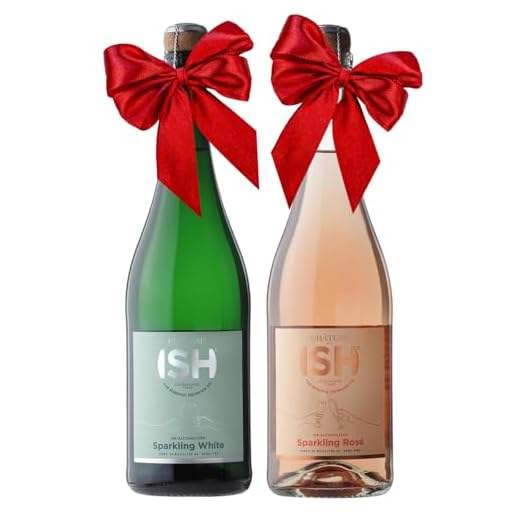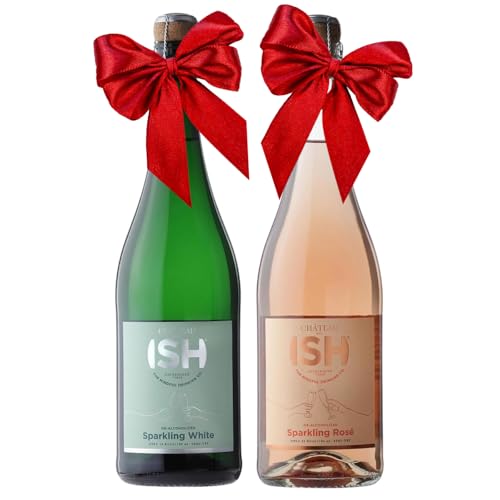

For those mindful of caloric intake, Pinot Grigio stands out as a prime selection, typically containing around 120 calories per 5-ounce serving. This Italian varietal offers a crisp palate with notes of green apple and pear, making it a refreshing choice without compromising flavor.
Another excellent contender is Sauvignon Blanc, often averaging approximately 120-125 calories per glass. Its zesty profile, enriched with citrus and herbal nuances, pairs beautifully with seafood and salads, enhancing your dining experience while keeping the calorie count in check.
Chardonnay can also be a light option, especially unoaked versions, which hover around 120-125 calories. The bright acidity and fruit-forward character make it versatile for various dishes, allowing for enjoyable pairings without excessive calories.
When selecting low-calorie choices, always consider the serving size and production methods, as these can significantly influence the overall caloric content. Exploring local vineyards can also reveal hidden gems that align with your dietary preferences, ensuring a delightful experience with every sip.
Top Low-Calorie White Wines to Consider
For those seeking lighter options, consider Sauvignon Blanc from New Zealand. This varietal typically offers around 100-120 calories per five-ounce serving, boasting zesty acidity and refreshing citrus notes.
Pinot Grigio is another excellent choice. Originating from Italy, it generally contains about 120 calories per serving, characterized by its crispness and subtle floral aromas.
Chablis, a French expression of Chardonnay, often has fewer than 100 calories per five ounces. With its mineral-driven profile and bright acidity, it pairs well with seafood.
If you enjoy a bit of sweetness, Riesling can be a delightful option. Opt for a dry style, which usually clocks in around 120-130 calories, delivering flavors of stone fruits and honey.
Grüner Veltliner, the Austrian standout, typically falls in the 100-120 calorie range. Its peppery notes and vibrant acidity make it a versatile partner for various dishes.
Lastly, consider sparkling options like Prosecco. A five-ounce serving often has around 90-100 calories, making it a celebratory yet lighter option for gatherings.
Understanding Wine Labeling and Calorie Content
Check the alcohol by volume (ABV) percentage on the label. Wines with lower ABV typically contain fewer calories. Aim for selections with an ABV under 12%. This often indicates a lighter style, which can be beneficial for those mindful of their intake.
Familiarize yourself with terms like “dry” and “sweet.” Dry options usually have less sugar, translating to lower energy content. Look for descriptors like “crisp” or “fresh,” which often suggest minimal residual sugars.
Serving Size Matters
Pay attention to the serving size noted on the bottle. Standard pours are usually 5 ounces, but many enjoy larger servings. A larger pour significantly increases the total energy consumed. Sticking to a measured serving can help manage overall intake.
Organic and Low-Calorie Labels
Explore organic labels. Many organic producers focus on minimal intervention, often resulting in lower sugar levels. Additionally, some brands market themselves specifically as low-energy options, so keep an eye out for those claims on the front label.
Keep an eye on the back label for nutritional information. Some producers include detailed data on sugar content and calories, aiding in informed choices. Labels that indicate “no added sugars” or “low residual sugar” can help narrow down selections.
Understanding these aspects of wine labeling allows for more informed choices, ensuring enjoyment without compromising dietary goals.
How Alcohol Content Affects Caloric Value
Higher alcohol levels in beverages significantly increase their energy content. Each gram of alcohol contributes about 7 calories, compared to carbohydrates and proteins, which provide 4 calories per gram. Therefore, wines with elevated alcohol percentages tend to have more calories. For example, a 12% ABV (alcohol by volume) wine typically contains fewer calories than a 15% ABV counterpart.
When selecting a beverage, consider both the alcohol and residual sugar content. Dry varieties usually have lower sugar levels, which can help reduce the overall caloric intake. Opting for wines with a balanced alcohol percentage and minimal sweetness can be a smart approach for those mindful of their dietary choices.
For instance, many of the lower-alcohol options, often around 10-11% ABV, are crafted from specific grape varieties and regions known for producing lighter styles. These selections not only satisfy your palate but also align with a more health-conscious lifestyle.
Understanding how these factors interplay will enhance your choices, allowing you to enjoy exquisite flavors while maintaining a mindful approach toward caloric consumption.
Tips for Enjoying Wine While Managing Calorie Intake
Choose sparkling options like Prosecco or Cava, which tend to be lighter and often lower in sugars than still varieties. This can help you enjoy a flavorful experience without excessive intake.
Portion Control
- Serve smaller glasses, ideally 4 ounces, to keep portions in check.
- Use a measuring cup or a wine pourer to ensure consistency.
- Limit yourself to one glass during meals to maintain balance.
Pairing Wisely
- Opt for light appetizers such as vegetables, seafood, or lean proteins that complement your drink without adding excessive calories.
- Avoid heavy sauces and creamy dishes that can increase the overall caloric load of your meal.
Consider aerating your beverage. This process enhances aromas and flavors, allowing you to appreciate your selection more fully, which can lead to a more satisfying experience with less quantity.
Stay hydrated by alternating sips of water between tastings. This not only helps manage overall intake but also enhances your palate for the next pour.
Explore options labeled as “dry” or “crisp,” as they typically have a lower sugar content. This can significantly impact the number of calories consumed, while still allowing for enjoyable flavors.
Lastly, keep a journal of your favorites and their profiles, helping you make informed choices in the future while maintaining awareness of your consumption habits.
Comparing Low-Calorie Options with Other Beverages
For those seeking lighter options, it’s beneficial to compare different beverages. Sparkling water, for instance, is an excellent alternative, providing hydration without additional calories. When assessing beverages, consider both flavor and enjoyment without significantly impacting your dietary goals.
Light beers typically range from 90 to 110 calories per serving, making them a popular choice for those watching their intake. However, many sparkling wines can offer a comparable experience with fewer calories. It’s essential to explore brands that highlight lower sugar content for the best results.
Mixed drinks can often contain hidden sugars and calories. Opting for spirits mixed with soda water or low-calorie mixers can provide flavor without excess. On the other hand, fruit juices, while nutritious, can be high in sugars; moderation is key.
For those who enjoy cocktails, consider using fresh herbs and citrus to enhance flavor without adding calories. This approach not only elevates the experience but also aligns with a lighter drinking strategy.
| Beverage | Calories per Serving |
|---|---|
| Light Beer | 90 – 110 |
| Sparkling Water | 0 |
| Mixed Drinks (with low-calorie mixers) | Varies |
| Fruit Juice | 100 – 150 |
Additionally, pairing your drink with healthy snacks can enhance the overall experience without the guilt. Fresh vegetables, nuts, or even whole-grain crackers can complement the flavors beautifully.
Lastly, for those looking to maintain cleanliness at home, consider tools like the best shower scrubber brush to keep your space tidy while enjoying your lighter beverage choices.
FAQ:
What is the lowest calorie white wine available?
The lowest calorie white wines typically come from dry varieties. For example, wines such as Pinot Grigio, Sauvignon Blanc, and Chardonnay can have calorie counts as low as 100-120 calories per 5-ounce serving. Brands often market low-calorie options specifically, so checking labels is advisable if calorie count is a priority. Additionally, many producers offer wines labeled as “light” or “lower calorie,” which can help consumers find suitable choices.
How do I choose a low-calorie white wine at the store?
When selecting a low-calorie white wine, first look for dry wines, as they generally contain fewer sugars than sweeter varieties. Checking the alcohol content can also help; wines with lower alcohol levels usually have fewer calories. It’s useful to read the labels, as many brands provide calorie information. Additionally, consider choosing wines that are marketed as “light” or “lower calorie” for more assurance about their calorie content.
Are there any health benefits to drinking low-calorie white wine?
Consuming low-calorie white wine in moderation can offer some health benefits. For instance, white wine contains antioxidants, which may help reduce inflammation and promote heart health. The lower calorie count can also make it a better option for those watching their weight. However, moderation is key, as excessive alcohol consumption can lead to negative health effects. It’s always best to consult with a healthcare professional regarding alcohol consumption and health.








